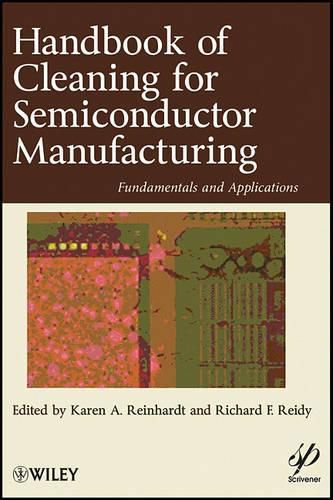Readings Newsletter
Become a Readings Member to make your shopping experience even easier.
Sign in or sign up for free!
You’re not far away from qualifying for FREE standard shipping within Australia
You’ve qualified for FREE standard shipping within Australia
The cart is loading…






This comprehensive volume provides an in-depth discussion of the fundamentals of cleaning and surface conditioning of semiconductor applications such as high-k/metal gate cleaning, copper/low-k cleaning, high dose implant stripping, and silicon and SiGe passivation. The theory and fundamental physics associated with wet etching and wet cleaning is reviewed, plus the surface and colloidal aspects of wet processing. Formulation development practices and methodology are presented along with the applications for preventing copper corrosion, cleaning aluminum lines, and other sensitive layers. This is a must-have reference for any engineer or manager associated with using or supplying cleaning and contamination free technologies for semiconductor manufacturing. From the Reviews… This handbook will be a valuable resource for many academic libraries. Many engineering librarians who work with a variety of programs (including, but not limited to Materials Engineering) should include this work in their collection. My recommendation is to add this work to any collection that serves a campus with a materials/manufacturing/electrical/computer engineering programs and campuses with departments of physics and/or chemistry with large graduate-level enrollment. -Randy Wallace, Department Head, Discovery Park Library, University of North Texas
$9.00 standard shipping within Australia
FREE standard shipping within Australia for orders over $100.00
Express & International shipping calculated at checkout
This comprehensive volume provides an in-depth discussion of the fundamentals of cleaning and surface conditioning of semiconductor applications such as high-k/metal gate cleaning, copper/low-k cleaning, high dose implant stripping, and silicon and SiGe passivation. The theory and fundamental physics associated with wet etching and wet cleaning is reviewed, plus the surface and colloidal aspects of wet processing. Formulation development practices and methodology are presented along with the applications for preventing copper corrosion, cleaning aluminum lines, and other sensitive layers. This is a must-have reference for any engineer or manager associated with using or supplying cleaning and contamination free technologies for semiconductor manufacturing. From the Reviews… This handbook will be a valuable resource for many academic libraries. Many engineering librarians who work with a variety of programs (including, but not limited to Materials Engineering) should include this work in their collection. My recommendation is to add this work to any collection that serves a campus with a materials/manufacturing/electrical/computer engineering programs and campuses with departments of physics and/or chemistry with large graduate-level enrollment. -Randy Wallace, Department Head, Discovery Park Library, University of North Texas